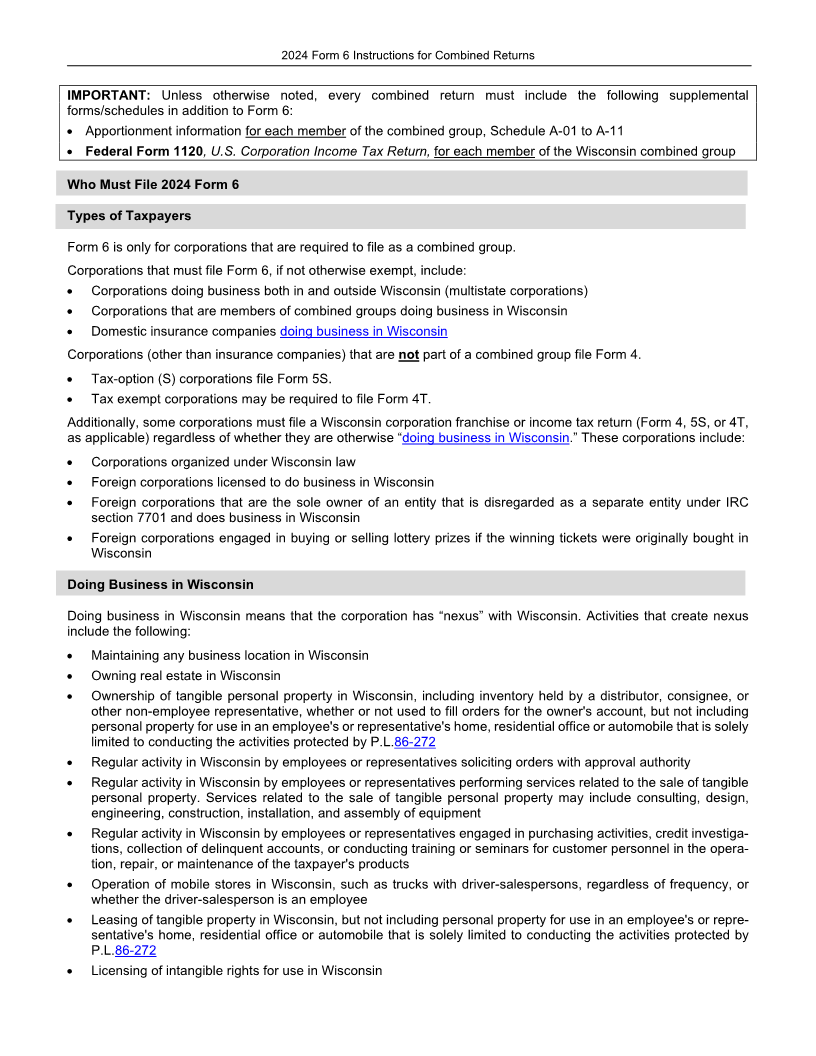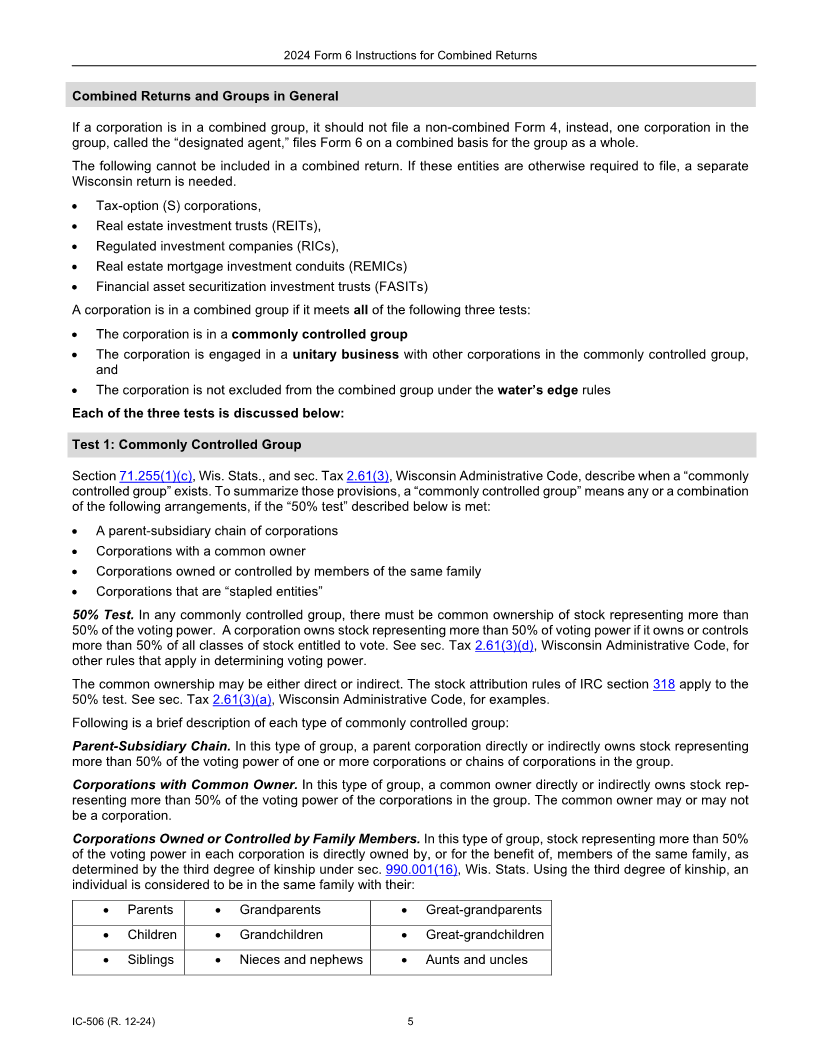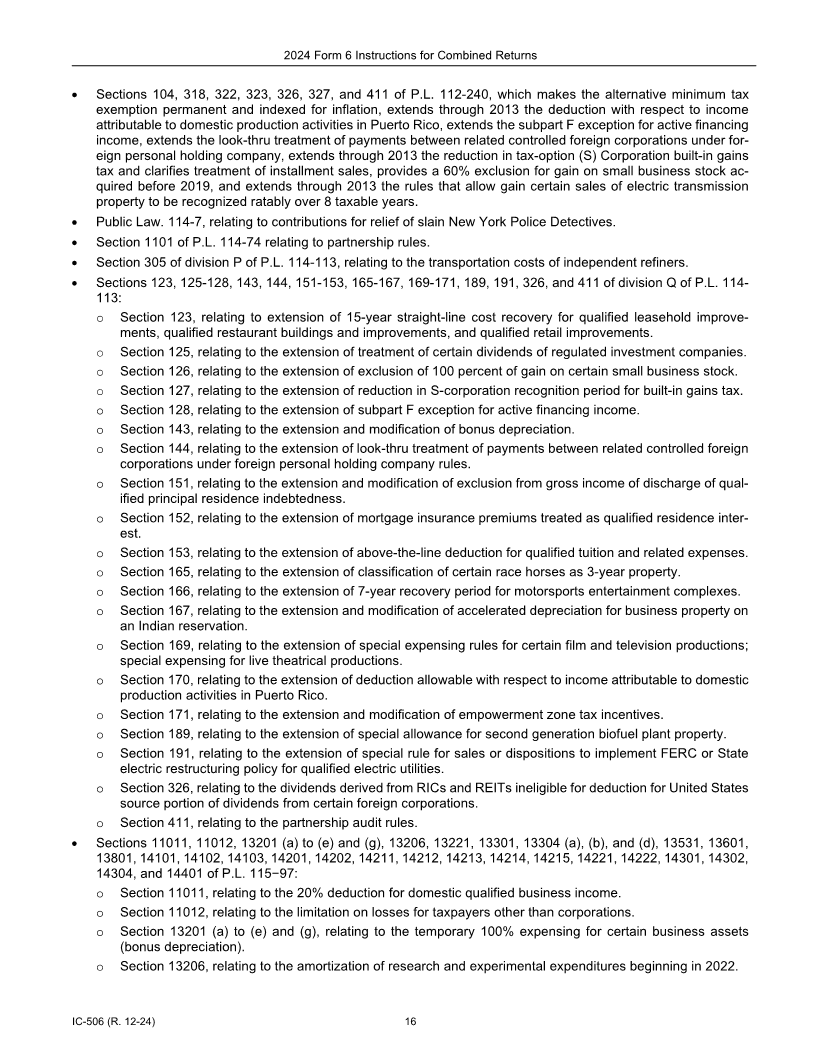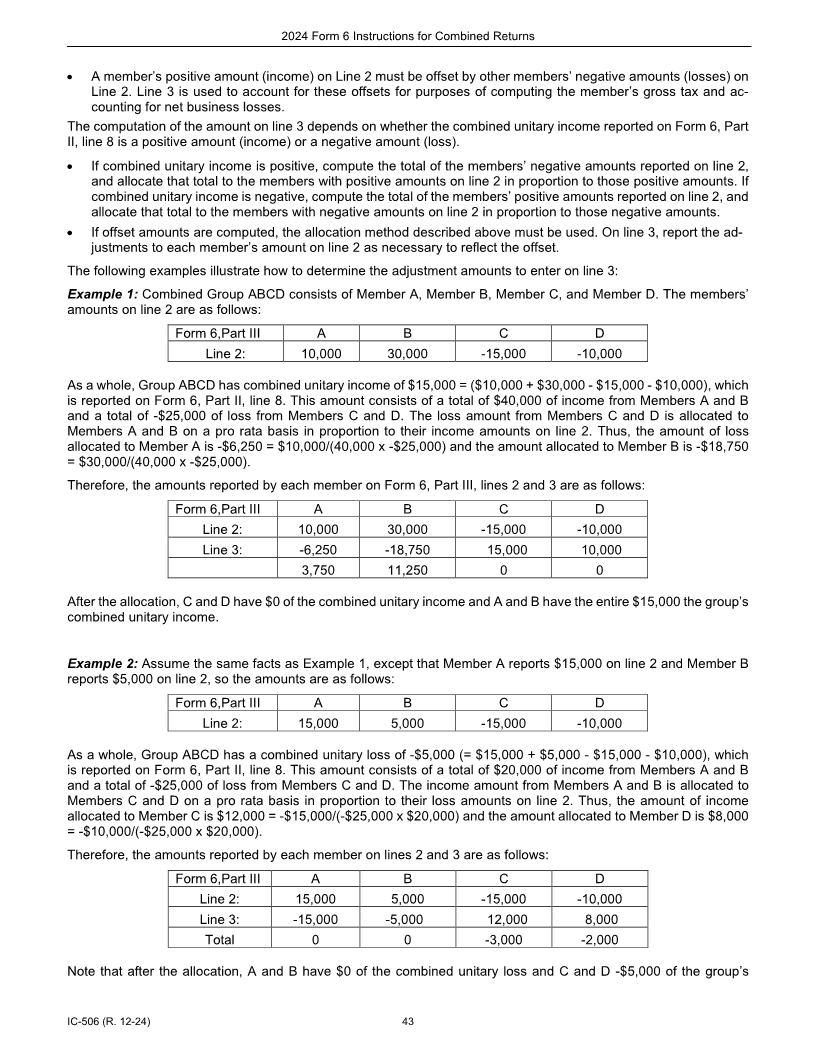
Enlarge image
2024 Form 6 Instructions for Combined Returns
Who Must File Form 6 ............................................................................................................................................. 2
Types of Taxpayers .................................................................................................................................................................2
“Doing Business in Wisconsin” ................................................................................................................................................2
Entities Not Required to File ....................................................................................................................................................3
Exempt Entities ........................................................................................................................................................................3
Franchise or Income Tax .........................................................................................................................................................4
Economic Development Surcharge .........................................................................................................................................4
Separate Return or Combined Return? ................................................................................................................. 4
Combined Returns and Groups in General ..............................................................................................................................5
Test 1: Commonly Controlled Group........................................................................................................................................5
Test 2: Unitary Business ..........................................................................................................................................................6
Test 3: Water’s Edge ...............................................................................................................................................................7
General Franchise or Income Tax Return Instructions ........................................................................................ 8
Who is the “Designated Agent?” ..............................................................................................................................................8
When and Where to File ..........................................................................................................................................................8
Period Covered by Return .......................................................................................................................................................9
Accounting Methods and Elections ........................................................................................................................................ 10
Payment of Estimated Tax ..................................................................................................................................................... 11
Components of Combined Return ......................................................................................................................................... 11
Required Disclosures and Information Returns ..................................................................................................................... 11
Internal Revenue Service Adjustments, Amended Returns, and Claims for Refund .............................................................. 12
Final Return ........................................................................................................................................................................... 13
Penalties for Not Filing or Filing Incorrect Returns ................................................................................................................. 14
Conformity with Internal Revenue Code and Exceptions .................................................................................. 14
Provisions of the Internal Revenue Code Not Adopted by Wisconsin: ................................................................................... 15
Other Exceptions to Internal Revenue Code .......................................................................................................................... 18
Depreciation and Bonus Depreciation ................................................................................................................................... 18
Section 179 Expense ............................................................................................................................................................. 19
Capital Losses ....................................................................................................................................................................... 19
Limitations on Certain Federal Deductions ............................................................................................................................ 19
Federal Consolidated Return Regulations ............................................................................................................................. 19
Differences Between Federal and Wisconsin Basis of Assets ............................................................................................... 19
General Instructions for Apportionment ............................................................................................................. 19
Who Must Use Apportionment ............................................................................................................................................... 20
Apportionment Method........................................................................................................................................................... 20
Nonapportionable Income ...................................................................................................................................................... 21
Separately Apportioned Income ............................................................................................................................................. 21
Corporate Partners or LLC Members ..................................................................................................................................... 21
Separate Accounting.............................................................................................................................................................. 21
Treatment of Specialized Industries and Entities ................................................................................................................... 22
Foreign Sales Corporations (FSCs) ....................................................................................................................................... 22
Interest Charge Domestic International Sales Corporations (IC-DISCs) ................................................................................ 22
Insurance Companies ............................................................................................................................................................ 22
Personal Holding Companies ................................................................................................................................................ 22
RICs, REMICs, REITs, and FASITs ....................................................................................................................................... 22
Tax Exempt Organizations ..................................................................................................................................................... 22
Line-by-Line Instructions for Form 6, Page 1 ..................................................................................................... 22
Form 6, Page 2 ...................................................................................................................................................................... 27
Part I: Modified Federal Taxable Income ............................................................................................................................... 29
Part II: Unitary Income Computation ...................................................................................................................................... 32
Part IV: Wisconsin Net Business Loss Carryforward ............................................................................................................ 46
Part V: Nonrefundable Credits .............................................................................................................................................. 50
Part VI: Additional Member Information ................................................................................................................................ 52
Required Attachments ........................................................................................................................................... 55
Web Resources .................................................................................................................................................................... 56
Contact Information ............................................................................................................................................................. 56
Obtaining Forms .................................................................................................................................................................. 56






















































